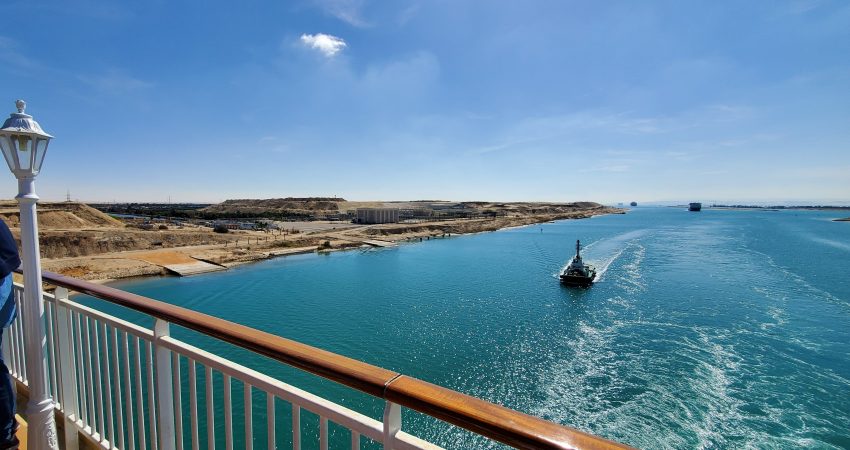Early in the morning we received an urgent message that our friends had secured a table at the rear of the ship for us to use as we travelled through the Suez Canal. Since it was an important part of our itinerary, and a bucket list item for all of us, their eagerness was understandable. We were there in minutes.
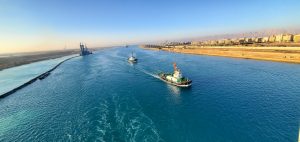
With the buffet close by and a bar that opened unnecessarily early we were set. The four of us spent an enjoyable day as we watched dolphins, small fishing boats, larger tug boats and massive trawlers pass us by. We were escorted by two tugs to ensure we stayed on course for the full 120 mile stretch between the Red Sea and the Mediterranean Sea. It takes on average 12 – 16 hours to transit the canal and since our ship had started rather early in the morning we were well on our way by breakfast.
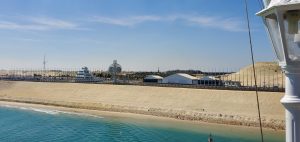
The Suez Canal was built as a trade route for shipping between Europe and Asia to avoid circumnavigating the continent of Africa. Cut through the Isthmus of Suez in Egypt, the boundary between Africa and Asia, it is vital for international trade but has been the centre of conflict since it opened.
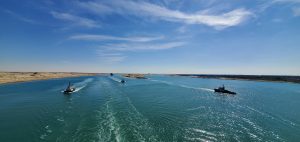
The Suez Canal opened in November of 1869. During much of its 10 year construction Egyptian peasants were drafted to dig the canal by hand with picks and shovels, resulting in the early demise of many. That inhumane practice ended in 1863 when a labour force was hired under much better working conditions.
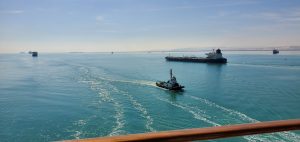
In 1888 the Convention of Constantinople decreed that the Suez Canal would operate as a neutral zone under the protection of the British. The British defended it from attack by the Ottoman Empire during the first World War, again from the Germans and Italians during WWII, and after as conflicts continued. It was Lester B Pearson, the Canadian Secretary of State for External Affairs at the time, who recommended the establishment of a United Nations peacekeeping force to protect the canal and ensure access to all. His proposal was ratified on November 4, 1956.

In 2015 the Egyptian government finished a major upgrade and expansion of the canal, adding depth, mileage and width to accommodate two way and a higher volume of traffic. On average 50 ships navigate the canal each day carrying more than 300 million tons of goods per year, and the occasional cruise ship passenger.
Later that night we found a certificate in our state room commemorating the experience. It was a fitting souvenir of an exceptional day at sea.
